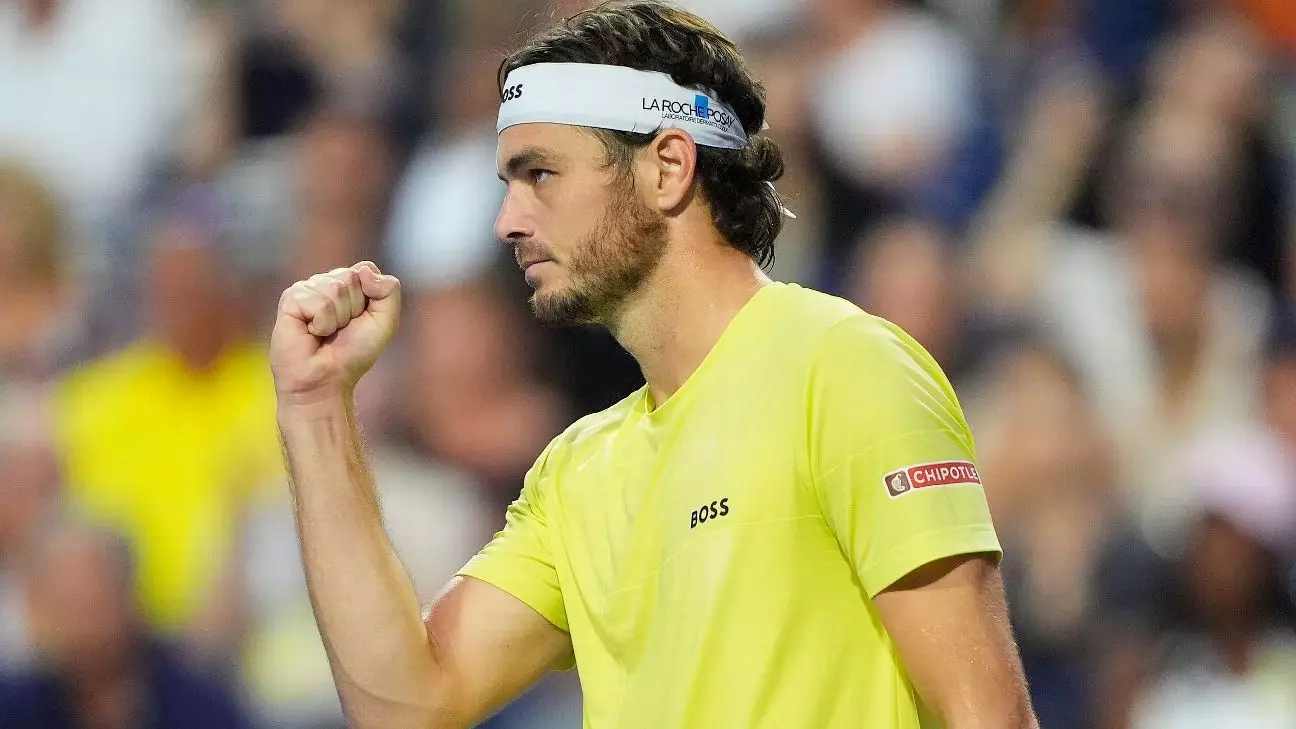In a groundbreaking development that signals a seismic shift in men’s tennis, two American players, Taylor Fritz and Ben Shelton, made history by clinching semifinal berths in an ATP Masters 1000 event—the first all-American semifinal in 15 years. This milestone does more than just elevate the players; it catalyzes renewed hope and momentum for U.S. tennis on the global stage. For years, the sport has been dominated by Europeans and Russians, with Americans struggling to reclaim their former dominance. Now, Fritz and Shelton’s victories challenge that narrative, demonstrating that the United States might be on the cusp of a renaissance.
This matchup’s rarity spotlights how American men’s tennis has fallen behind in recent years. The last time two compatriots faced off in such a prestigious semifinal was during a Cincinnati tournament in 2010, underscoring how rare and vital this moment is for American tennis fans. The fact that these players are young—Shelton at 22, Fritz in his mid-twenties—only amplifies the significance. They symbolize fresh talent, perseverance, and a potential shift in power dynamics within the sport. Their success questions the long-held belief that American men’s tennis is in decline and sparks hope that, with proper nurturing, this can be the start of a new chapter.
Individual Brilliance Highlights the New Wave
Fritz’s commanding performance against Andrey Rublev showcased his resilience, power, and strategic acumen. Serving with precision and hitting 20 aces—including one that ended the match—he demonstrated that he is not only a formidable competitor but also a player thriving under pressure. The episode was a masterclass in consistency and mental fortitude, proving that Fritz’s rising trajectory is more than fleeting momentum; it is a harbinger of sustained excellence. His assertiveness on the court revealed a player who is confident and ready to take on the world’s best, with his sights set on his second Masters 1000 crown.
Meanwhile, Shelton’s victory over Alex de Minaur reinforced his burgeoning reputation. His game is characterized by athleticism, resilience, and a fearless attitude. He enters the semis with a clean slate—unranked in the top echelons a few years ago—and now stands poised to contend with the best. Shelton’s words about Fritz being a “big-match player” reveal respect, camaraderie, and a recognition of how far they have come. They represent a new American cohort that is not just participating, but actively challenging the established European hierarchy with confidence and vigor.
Their upcoming face-off will be more than just a semifinal; it will symbolize the resurgence of American dominance in tennis. Fans and analysts alike are questioning whether this rivalry could serve as a catalyst for future American champions and possibly rekindle the nation’s long-lost Grand Slam glory—highlighted by Andy Roddick’s 2003 US Open triumph, the last major for an American man. Shelton’s optimistic declaration that “one of us is going to get it” reflects a belief that the era of American excellence, dormant for nearly two decades, might be returning.
Challenging the Global Tennis Landscape
While Fritz and Shelton face their American counterparts in the semifinals, the tournament continues to feature other tennis giants, including Alexander Zverev and Karen Khachanov. Their presence underscores the highly competitive environment these young Americans are stepping into. However, what makes Fritz and Shelton’s progress so compelling is their trajectory amid a landscape fraught with challenges—top-ranked players, evolving playing styles, and the shifting preferences of tournament organizers to favor other surfaces and players.
Notably, Fritz’s recent loss in the Wimbledon semifinals to Carlos Alcaraz highlights the increasing difficulty American players face against emerging global talents. Yet, his resilience at the Canadian Masters, unbreached in his resolve, indicates a player who refuses to be pigeonholed or intimidated. Shelton, on the other hand, embraces the unpredictability of the tournament scene, eager to challenge norms and carve his own path. Their victories symbolize the power of youthful exuberance combined with strategic maturity—a potent recipe to disrupt the traditional tennis order.
This wave of American talent also prompts a reevaluation of training programs, coaching philosophies, and youth development strategies in the United States. If these players continue to succeed, they will serve as beacons encouraging investment in grassroots initiatives and mentorship programs. Moreover, their stories will inspire aspiring players, proving that with determination and grit, American tennis can once again assert its presence at the sport’s highest levels.
Their journey promises to reshape perceptions, defy expectations, and perhaps most importantly, inspire a nation that has long been starved for American success stories in men’s tennis. The next chapter will be written on these courts, and if their semifinal showdown is any indication, the future of American men’s tennis has never looked brighter or more compelling.


Leave a Reply